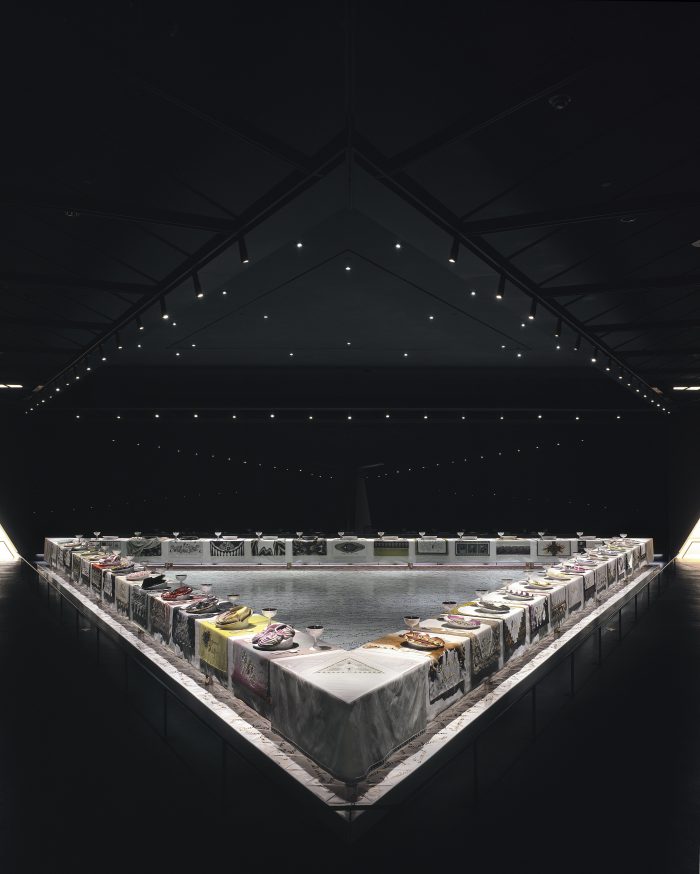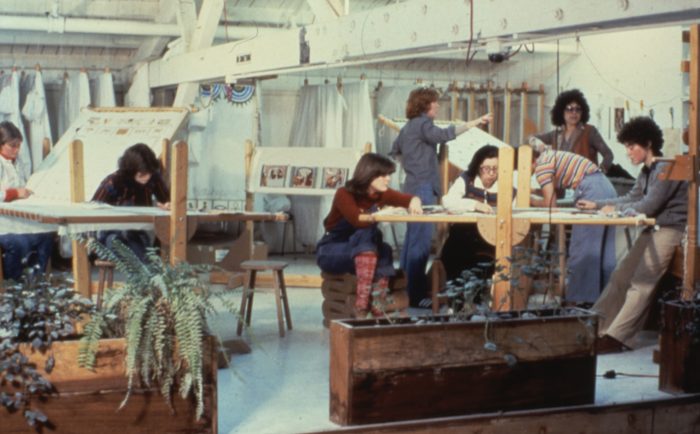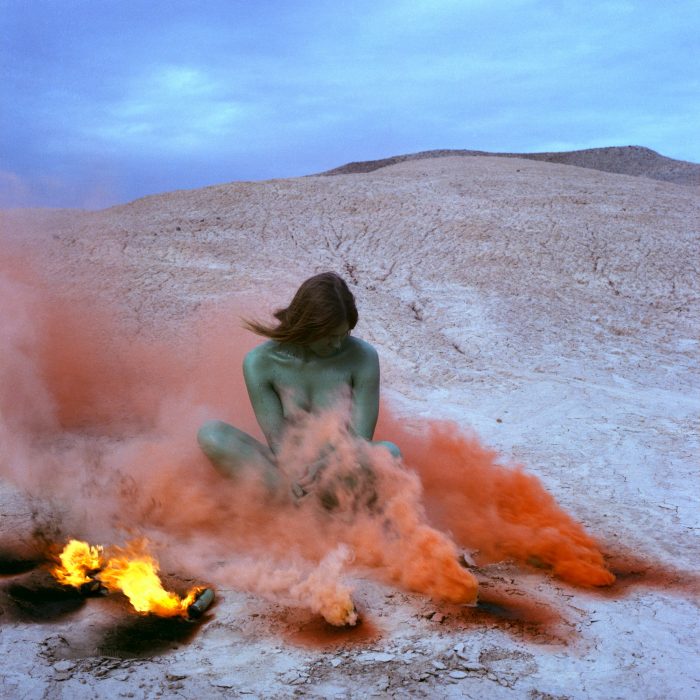
For many art historians, Judy Chicago’s The Dinner Party, 1974-79, is the defining work of feminist art. The triangular table set for 39 of history’s most illustrious women with porcelain plates in vulva-like forms was given a room of its own at the Brooklyn Museum in 2007. Over the next year, that reputation will be compounded as exhibitions at both the National Museum of Women in the Arts and the Brooklyn Museum—its permanent home—open to look at how The Dinner Party was made, while numerous other venues are looking back on Chicago’s lesser-known works.
“If Judy Chicago hadn’t done The Dinner Party, many artists, like Robert Mapplethorpe, wouldn’t be doing the work they did,” says Elizabeth Sackler, who founded the Elizabeth A. Sackler Center for Feminist Art at the Brooklyn Museum with Chicago’s work as its centerpiece. “She broke through. Using the vulva as a symbol—nothing like that had been done before.”

Yet still to this day, Chicago, who is 79, says she looks forward to a time when people “start looking at The Dinner Party as art.” Too much attention has been paid to the sensational subject matter, she says, and too little to the craft—the technique of china painting, for instance, or how it was produced in collaboration with other female artisans.
Chicago hopes the show opening at the Brooklyn Museum in October will change that, and “demonstrate how I took really kitschy needle techniques and transformed them into an expressive vehicle for a work of high art.” The show will feature correspondence about The Dinner Party between Chicago and other leading feminists of the day, as well as preparatory material. “The sketches and studies—whether they explore color, composition or even historical quotations—are artworks in their own right, and show the care and determined artistic pursuit that can feel distant when approaching the artwork in its iconic final state,” says Brooklyn Museum curator Carmen Hermo. Meanwhile, the National Museum of Women in the Arts opens its corollary event in Washington, D.C., this month to look specifically at COLLABORATIVE, Chicago’s studio practice during the making of the seminal installation.
The institutionalization of The Dinner Party has at last secured the work’s fate after decades of embattlement on both sides of the political spectrum. In 1990, Republican members of Congress deemed it “3-D pornography” and successfully halted its donation to the University of the District of Columbia with threats to withhold funding if the school accepted Chicago’s gift. Meanwhile, the Women’s Studies Department at UCLA planned a protest when the work was shown at the Hammer Museum in 1996 because they felt it “degraded women,” Chicago says.

The controversies made Chicago a celebrity, but fame came with a price. “Even though I was very grateful for all the attention The Dinner Party brought me, it blocked out all the rest of my work,” she says. “I hope I live long enough to see the time when The Dinner Party is only one work in a huge body of work.”
That dream may be coming within reach sooner rather than later as several other shows around the country begin to highlight rarely seen works from throughout Chicago’s long career. This month, Jessica Silverman Gallery in San Francisco is opening “Judy Chicago’s Pussies,” featuring the artist’s drawings of cats from between 1964 and 2004. “She has a very intense maternal relationship with her cats,” Silverman says, “and this show really focuses on how her work has been associated with pussy power as a visual metaphor for female agency.”
In January, Salon 94 in New York will feature “PowerPlay,”a series of works that hasn’t been shown in the city since 1987. Chicago’s investigation of the construct of masculinity, the paintings depict godlike nudes with guns and rainbows emanating from their hands. “Unfortunately it’s incredibly prescient,” Chicago said of the series. “There’s one work called Pissing on Nature, which is like Trump pulling out of the climate pact.” The series, executed long before gender studies programs were widespread on university campuses, demonstrates Chicago’s foresight for imagining the ways that masculinity, too, is socially constructed.

Then, another opportunity to expand understanding of Chicago’s practice beyond her trademark table comes next fall at the Institute of Contemporary Art Miami, which will synthesize three decades of Chicago’s career. “This is an exciting moment of heightened and inspiring interest around Judy’s work, and recognition for her achievement of busting open the art historical canon,” says the museum’s chief curator, Alex Gartenfeld.
As an art student in the 1950s, Chicago discovered that she was ahead of her time when it came to having her feminist awakening as well. “I knew what I was encountering was sexism even though there was no term for it yet. People would say, ‘What are you some kind of suffragette?’ And I’d go, ‘Oh no! I’m not one of those dusty old ladies!’” But by 1970 that early feminist intuition had hardened into ideology. That year, the artist who was born in Chicago as Judith Cohen, and later became Judy Gerowitz in marriage, declared in an artist statement that she was divesting herself “of all names imposed upon her through male social dominance and freely chooses her own name Judy Chicago.”
From then on she has proudly embraced her feminism, fashionable or not. “No one gets upset about being called Pictures Generation or a Pop artist, but for some reason people ask, ‘Why would you want to be called a feminist artist?’ Because feminist art is a major art movement!” she says. “I’m proud of the long struggle for equity that women, with men’s support, have engaged in










 in your life?
in your life?

